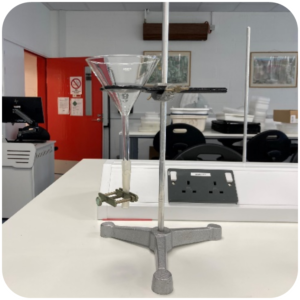Author: Mirka Schuettkus, BSc Marine Biology, University of Aberdeen
Project: Microplastic distribution in the Gulf of Cadiz
Supervisor: Rachel Brackenridge, School of Geosciences, University of Aberdeen
Interdisciplinary approaches and methods are essential for scientific research and investigations, and so, as a Marine Biology Student in my third year at the University of Aberdeen, this placement was the perfect opportunity for me to get insight into a different area of marine research and expand my horizons.
The project I participated in was supervised by Rachel Brackenridge, a member of the School of Geosciences, and focussed on how different sedimentary processes and ocean currents influence the deposition of microplastic particles.
The area of study, the Gulf of Cadiz, is located on the south coast of the Iberian Peninsula, right where the Mediterranean Sea empties into the Atlantic Ocean, making it a highly interesting area in terms of Oceanography.
As we were interested in depositions on the seabed and the Gulf of Cadiz reaches depths of more than 4000m, it would have been very costly to go and collect the sediment ourselves. So instead, we got our samples from so-called legacy cores – samples of the seabed that had been taken on previous research cruises and are now stored for researchers to access more easily. In the end, we had a total of 26 samples, from different locations in the gulf.

In order to estimate the number of microplastics in the samples, we had to extract the particles from the sediment. First, we dried the sediment in an oven at a low temperature, so that the plastic would not melt. Then, each sample went through a separation and extraction process. Our setup consisted of a glass funnel with a short piece of tubing at the bottom, which was held close by a clamp. In the funnel, we dispersed each sample in a highly concentrated salt solution. As plastic and sediment have different densities, the salt solution helped to separate the particles – leaving the microplastic swimming on the surface, whereas the sediment collected at the bottom of the funnel. After the sediment had settled, we drained it into a container by opening the clamp, without losing too much of the liquid. The leftover solution with the dispersed microplastic was then run through a filter paper. Once separated, we counted the microplastic particles in each sample and ran a grain size analysis with the left-over sediment, to get a better understanding of the sedimentary characteristics of each sample location.
After all the lab work was done and the data collection completed, we went on to analyse our data and look for geographical hotspots for microplastic deposition. To do so, we used the Geographic Information System Arc (GIS) and mapped the microplastic quantities for the different sampling locations. Additionally, we plotted microplastic concentration against several different factors, such as sample age, water depth, and grain size.
Carrying out lab work and being involved in a project from the very beginning was definitely my favourite part of the placement. Getting to witness the entire process of a scientific investigation is an experience you do not get during your undergraduate curriculum (except for your Honours project) and so, being part of the planning and sometimes trial and error stages shows you what research is really like. Also, working alongside experienced researchers helped a lot in getting settled into the project. Rachel took great care of me, patiently explained everything I needed to know and provided a lot of extra reading for me to wrap my head around all the new terminology I was confronted with.
I am more than excited to continue to keep up with Rachel’s further work and to see how it may contribute to or build on the findings of this project. I was honoured to be part of, and assist with this piece of research alongside an incredibly experienced and enthusiastic researcher, who managed to ignite a continuously growing flame of interest in sediment and Oceanography in me.





















































